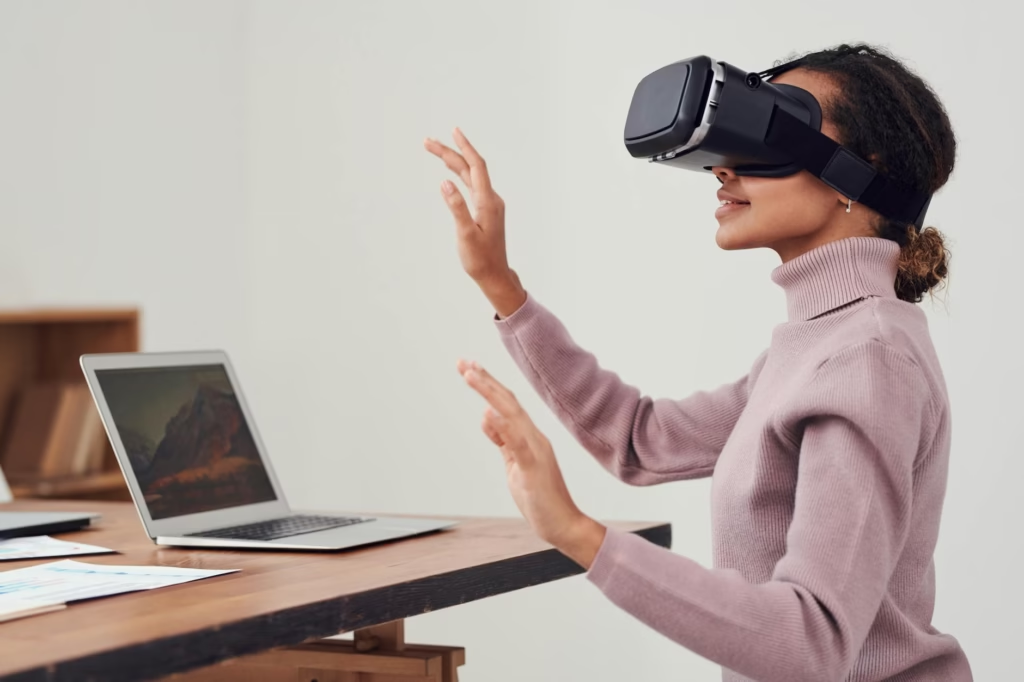In recent years, virtual reality (VR) technology has emerged as a transformative force in various industries, and architecture and design are no exceptions. With its ability to create immersive, interactive environments, VR has revolutionized the way architects and designers conceptualize, visualize, and present their projects. This article explores the evolution of VR, its benefits and challenges in architecture and design, and its promising future.

Understanding Virtual Reality
Virtual reality is a computer-generated simulation of a three-dimensional environment that allows users to explore and interact with it as if they were physically present. Key components of VR technology include headsets, motion controllers, and software that creates the simulated environments. Over the decades, VR has evolved from a nascent technology into a powerful tool that enhances the creative capabilities of architects and designers.
Historical Context
The journey of virtual reality in architecture began in the late 1960s when computer scientist Ivan Sutherland developed the first head-mounted display, paving the way for future VR innovations. During the early 1990s, VR technology found its footing in integrated circuit design, enabling designers to create complex layouts swiftly. As computer technology advanced, VR applications in architecture grew, culminating in the mid-2000s when architects could utilize 3D modeling tools for building designs.
In the last decade, the accessibility of smartphones and tablets has facilitated the widespread adoption of VR tools in the architecture and design industries. The introduction of user-friendly VR headsets, such as the Oculus Rift and HTC Vive, has further propelled this trend, allowing for more immersive experiences.
Benefits of VR in Architecture and Design
Enhanced Visualization and Design Accuracy
One of the most significant advantages of VR in architecture is its ability to provide architects and designers with a clear and detailed visualization of their projects before construction begins. This capability allows for the early identification of potential design flaws and a better understanding of how designs will interact with their surrounding environments.
Cost Savings
VR can lead to substantial cost savings throughout the design process. By gaining insights into design efficiency and making adjustments before physical construction starts, architects can reduce material waste and overall project costs. Additionally, VR minimizes the need for expensive physical mockups, saving both time and resources.
Improved Collaboration
Collaboration is crucial in architecture and design, and VR serves as a valuable tool in this regard. It enables all stakeholders—architects, designers, clients, and contractors—to engage with the design in a virtual environment, fostering effective communication and feedback. This collaborative approach ensures that the final product aligns closely with the client’s vision.
Attracting and Retaining Clients
Showcasing designs in a VR environment allows architects and designers to demonstrate their capabilities impressively. By offering clients the chance to explore virtual representations of their projects, firms can differentiate themselves in a competitive market, attract new clients, and strengthen their reputations.
Challenges of VR in Architecture and Design
Technical Challenges
Despite its advantages, the implementation of VR technology in architecture comes with technical challenges. The high costs associated with the necessary hardware and software can be prohibitive for smaller firms. Additionally, the need for specialized skills to set up and operate VR systems can be a barrier to entry for some architects and designers.
Safety Concerns
While VR systems are generally safe, extended use can pose risks such as motion sickness. Users may experience discomfort or disorientation during prolonged sessions. Moreover, physical injuries can occur if users are not aware of their surroundings while immersed in a virtual environment.
Privacy and Security Issues
As VR technology becomes more integrated into design processes, privacy and security concerns must be addressed. Safeguarding user data and ensuring that virtual environments are secure from unauthorized access is crucial for maintaining trust and confidentiality in architectural projects.
Future of VR in Architecture and Design
The potential applications of VR in architecture and design are virtually limitless. In the future, VR could allow architects to create interactive visual simulations of structures, enabling clients to experience how designs will look and feel in real-time. This capability could significantly enhance collaboration and feedback during the design phase.
Additionally, VR will likely play a vital role in urban planning, allowing architects and urban developers to visualize and evaluate various design options for cities. By simulating urban environments, designers can explore sustainable solutions that optimize space and resources.
Moreover, VR could be used to reimagine existing spaces, allowing architects to experiment with different materials and layouts without committing to physical alterations. This flexibility could lead to innovative designs that breathe new life into aging structures.
Conclusion
Virtual reality technology is revolutionizing the architecture and design industry, offering new tools and opportunities for creating better, more efficient designs. The benefits of VR—including enhanced visualization, cost savings, improved collaboration, and client engagement—are reshaping the way architects approach their work. While challenges related to technical expertise, safety, and security remain, ongoing advancements in VR technology promise to overcome these obstacles. As we look to the future, the integration of VR in architecture and design holds immense potential, paving the way for a new era of creative exploration and innovation.
